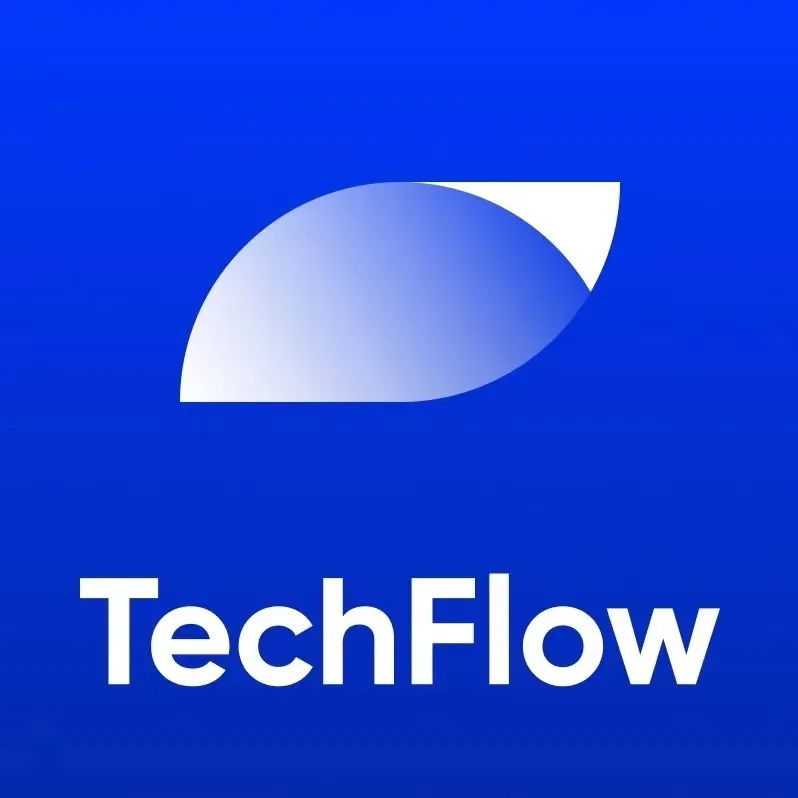Interpreting the MegaETH White Paper: Infrastructure Never Sleeps, What Are the Unique Advantages of the Massive Financing L2 Invested by Vitalik?
Author: Deep Tide TechFlow
Infrastructure never sleeps, and there are more chains than applications.
While the market is suffering from the PUA of various king projects' airdrops, the primary market is still racing down the path of "creating kings."
Last night, another explosive L1 emerged --- MegaETH, with a seed round financing of $20 million, led by Dragonfly, with participation from Figment Capital, Robot Ventures, and Big Brain Holdings, among others. Angel investors include Vitalik, Cobie, Joseph Lubin, Sreeram Kannan, Kartik Talwar, and others.

Top VC leading, industry giants like Vitalik as angel investors, and the project name directly incorporating ETH… In the limited attention span of the crypto market, these labels undoubtedly lend the project "legitimacy."
From the official project description, MegaETH can be summed up in one familiar word --- fast.
The first real-time blockchain, transmitting transactions at lightning speed, with sub-millisecond latency and over 100,000 transactions per second…
In a market where all participants are aesthetically fatigued by the performance narratives of public chains, what does MegaETH rely on to stand out?
We dug into MegaETH's white paper to try to find the answer.
Many chains, but none can achieve "real-time"
Assuming we set aside the narratives and hype, why does the market still need a blockchain called MegaETH?
MegaETH's own answer is that simply creating more chains does not solve the blockchain scalability problem. Current L1/L2s face common issues:
All EVM chains exhibit low transaction throughput;
Secondly, due to scarce computational power, complex applications cannot be put on-chain;
Finally, applications that require high update rates or rapid feedback loops are unfeasible with long block times.

In other words, all existing blockchains currently cannot achieve:
Real-time settlement: Transactions are processed immediately upon reaching the blockchain, and results are published almost instantaneously.
Real-time processing: The blockchain system can process and validate a large number of transactions in an extremely short time.
What does this real-time capability translate to in practical application scenarios?
For example, high-frequency trading requires the ability to place and cancel orders within milliseconds. Or in real-time combat or physics simulation games, the blockchain needs to update states at a very high frequency. Clearly, current chains cannot achieve this.
Node specialization, performance real-time
So, what is MegaETH's general approach to achieving the aforementioned "real-time"? In short:
Node specialization: By separating transaction execution tasks from the responsibilities of full nodes, consensus overhead is reduced.
To be more specific, MegaETH has three main roles: Sequencer, Prover, and Full Node.
Specifically, there is only one active sequencer in MegaETH at any given time executing transactions, while other nodes receive state differences and update their local states through a p2p network without re-executing transactions.
The sequencer is responsible for ordering and executing user transactions. However, MegaETH has only one active sequencer at any given time, eliminating consensus overhead during normal execution.
Provers use a stateless verification scheme to validate blocks in an asynchronous and unordered manner.
A simplified workflow of MegaETH is as follows:
Transaction processing and ordering: User-submitted transactions are first sent to the Sequencer, which processes these transactions in order, generating new blocks and witness data.
Data publication: The sequencer publishes the generated blocks, witness data, and state differences to EigenDA (data availability layer), ensuring that this data is available on the network.
Block validation: The Prover Network retrieves blocks and witness data from the sequencer, validates them using dedicated hardware, generates proofs, and returns them to the sequencer.
State update: The Full Node Network receives state differences from the sequencer, updates local states, and can validate the block's validity through the prover network, ensuring the consistency and security of the blockchain.

Measure first, then execute
From other parts of the white paper, MegaETH also realizes that this "node specialization" approach is good, but it does not mean that it can be easily put into practice.
When actually building the chain, MegaETH has a good idea: measure first, then execute. That is, conduct in-depth performance measurements to identify the real problems of existing blockchain systems, and then see how to apply this node specialization approach to solve those problems.
So, what problems did MegaETH measure?
The following part is actually quite far from the average user; if you lack patience, you can skip to the next section.
Transaction execution: Their experiments show that even with powerful servers equipped with 512GB of memory, the existing Ethereum execution client Reth can only achieve about 1000 TPS (transactions per second) in real-time sync settings, indicating significant performance bottlenecks in executing transactions and updates.
Parallel execution: Regarding the popular parallel EVM concept, there are still some unresolved performance issues. The acceleration effect of parallel EVM in actual production is limited by the parallelism of the workload. MegaETH's measurements show that the median parallelism in recent Ethereum blocks is less than 2, and even when merging multiple blocks, the median parallelism only increases to 2.75.
(A parallelism of less than 2 indicates that in most cases, there are fewer than two transactions that can be executed simultaneously in each block. This suggests that most transactions in the current blockchain system are interdependent and cannot be processed in large-scale parallelism.)

Interpreter overhead: Even faster EVM interpreters, like revm, are still 1-2 orders of magnitude slower than native execution.
State synchronization: Synchronizing 100,000 ERC-20 transfers per second requires 152.6 Mbps of bandwidth, while more complex transactions require even more bandwidth. Updating the state root in Reth consumes 10 times more computational resources than executing transactions. In simpler terms, the current blockchain resource consumption is somewhat high.
After measuring these issues, MegaETH began to address them, which also clarifies the logic of the solutions mentioned above:
- High-performance sequencer:
Node specialization: MegaETH improves efficiency by assigning tasks to specialized nodes. Sequencer nodes specifically handle transaction ordering and execution, full nodes are responsible for state updates and validation, and prover nodes use dedicated hardware to validate blocks.
High-end hardware: Sequencers use high-performance servers (e.g., 100 cores, 1TB memory, 10Gbps network) to handle a large number of transactions and quickly generate blocks.
- State access optimization:
Memory storage: Sequencer nodes are equipped with large amounts of RAM, capable of storing the entire blockchain state in memory, eliminating SSD read latency and speeding up state access.
Parallel execution: Although the acceleration effect of parallel EVM is limited in existing workloads, MegaETH optimizes the parallel execution engine and supports transaction priority management to ensure that critical transactions are processed promptly even during peak times.
- Interpreter optimization:
AOT/JIT compilation: MegaETH accelerates the execution of compute-intensive contracts by introducing AOT/JIT compilation techniques. Although most contracts see limited performance improvements in production environments, these techniques can significantly enhance performance for specific high-computation scenarios.
- State synchronization optimization:
Efficient data transmission: MegaETH has designed an efficient state difference encoding and transmission method that can synchronize a large number of state updates under limited bandwidth.
Compression technology: By adopting advanced compression techniques, MegaETH can synchronize state updates for complex transactions (like Uniswap swaps) within bandwidth constraints.
- State root update optimization:
Optimized MPT design: MegaETH employs an optimized Merkle Patricia Trie (such as NOMT) to reduce read/write operations and improve the efficiency of state root updates.
Batch processing technology: By batch processing state updates, MegaETH can reduce random disk IO operations and enhance overall performance.
The above points are quite technical, but stepping back from these technical details, you can see that MegaETH truly has technical prowess and a clear motivation:
By publicly sharing detailed technical data and test results, it attempts to enhance the project's transparency and credibility, allowing the technical community and potential users to gain a deeper understanding and trust in its system's performance.

Ivy League team, frequently favored?
In interpreting the white paper, it is evident that while MegaETH has a somewhat flashy name, the documentation and explanations often reveal a rigorous and overly detailed technical nerdiness.
Public information shows that the MegaETH team seems to have a Chinese background, with CEO Li Yilong coming from Stanford, holding a PhD in computer science; CTO Yang Lei is a PhD from MIT, and CBO (Chief Business Officer) Kong Shuyao has an MBA from Harvard Business School, with experience at several industry institutions (such as ConsenSys); the growth lead overlaps with the CBO's background and also comes from the prestigious New York University.


A team where all four members come from top universities in the U.S. speaks volumes about their influence in terms of connections and resources.
Previously, we also introduced in the article "Graduates as CEOs, what is the background of Nexus, which raised $25 million led by Pantera?" that although Nexus's CEO is a recent graduate, he also comes from Stanford and appears to have a solid technical background.
Top VCs indeed prefer technical big shots from top schools, and with Vitalik also participating and the name incorporating ETH, the technical narrative and marketing effects are likely to be maximized.
In the current environment where old "kings" are becoming "fallen kings," and projects are in a state of transition with fluctuating markets, MegaETH is clearly poised to bring about a new wave of FOMO effects.
We will continue to keep an eye on more information regarding the project's testnet and interactions.













